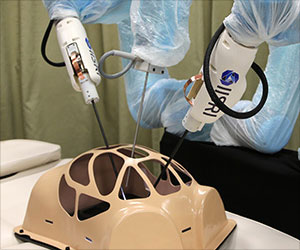From guns for teachers to protect themselves in any eventuality to GPS anklets for truant children. Texas school culture is undergoing some interesting times.
First it was an order enabling teachers to carry guns in order to protect themselves and their charge. Now a judge has suggested electronic tracking device to bring round truant students.
On Friday, Precinct 4 Justice of the Peace Linda Penn announced a six-month pilot program under which she will order truant students who pass through her court to wear global positioning system, or GPS, tracking units around their ankles.“Student and parents must understand that attending school is not optional,” Penn said. “It is mandatory. It is the law.”
The number of truancy cases filed by Bexar County school districts increased to 20,344 in 2007-08 from 14,114 in 2004-05, according to information provided by the county.
Those figures include cases filed against students and separate cases filed against their parents.
Penn will start ordering the use of GPS monitoring devices beginning with the 2008-09 school year, which starts Monday, reports San Antonio Express.
Hers will be the only of Bexar County's four justice of the peace precincts to use the anklets — thick, black bracelets that can't be removed. They are similar to the devices that are worn by individuals placed under house arrest.
Advertisement
The length of time students will have to wear the anklets will vary by case.
Advertisement
Penn said she didn't have a cost estimate for the program — her office will pick up the tab — or how much a single device costs.
Electronic monitoring is the newest component of Penn's overall truancy reduction plan, which was launched four years ago and includes mentoring, tutoring and counseling.
Statistics show truant students are more likely to engage in criminal behavior, join gangs and drop out of school. And when they drop out, not only do they hurt themselves by diminishing their earning power, but also they put a strain on the local economy and add to the jail and prison populations.
“We have a bloated jail because we have not addressed the front end of the system adequately enough to stop them from getting there in the first place,” said County Commissioner Tommy Adkisson, who joined Penn, and Police Chief William McManus in unveiling the program.
Adkisson also pointed out that school district budgets are hit by truant students because their state funding is based on student attendance.
Penn pointed to the Midland program, saying the attendance rate for truants in that program increased to higher than 90 percent. And the Dallas Morning News reported in May that attendance by students in that program went from 84 percent to 97 percent in a six-week period.
But civil liberties advocates are worried: Tim Sparapani, senior legislative counselor for the American Civil Liberties Union, said he could understand using such devices as a last resort for students with the severest of truancy problems, but worries that it could open the door to more widespread use.
“It seems like a novel approach, but again, we have to be cautious that we don't become overzealous and begin to expand it to all students, or students who are occasionally truant,” Sparapani said. “Direct monitoring of minors has never been necessary before, and it isn't necessary now just because there's technology that permits it.”
Source-Medindia
GPL/L







